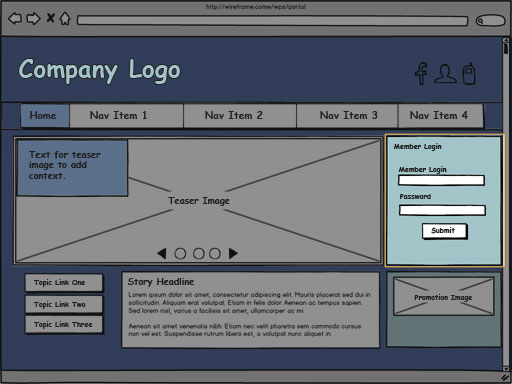Portlets
Portlets are small applications that are independently developed, deployed, managed, and displayed. After the portlet is deployed, we can use it multiple times on different pages.
Almost everything on a page is rendered through a portlet. The
portlet can provide access to enterprise data, content stored
in HCL Web Content Manager, and external
content from third-party sources. In the following image, there are
five portlets on the page, but only one is highlighted. The highlighted
Member Login Portlet is providing access to the enterprise LDAP user
registry to enable members to authenticate.

Application palette
Content authors access portlets from the Applications palette (Create > Applications).
Content portlets
Specialized portlets are available to render content.
- Web Content Viewer
- Renders content from Web Content Manager. When an author drags content from the Content palette onto a page, the content is rendered using the Web Content Viewer Portlet.
- Web Dock Portlet
- Renders content from third-party sources. And administrator must configure the content provider source and associate it with a Web Dock application. Then, content authors can add the Web Dock Portlet to a page.
- Syndicated Feed Portlet
- Gets feeds from third-party feeds. The portlet is configured to retrieve weekly podcasts from IBM developerWorks.
Administration portlets
Use administrations portlets to configure portal. Administrations portlets are immediately available after we install the portal. To get to the administration portlets, click the Administration menu icon in the toolbar. Administration portlets are also available in the Applications palette.
Parent topic: Portal administration